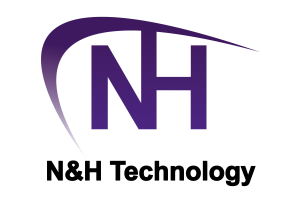New version of Merlic from MVTec
Now with plug-in for Simatic S7 PLCs
Thanks to a plug-in for the widely used Simatic S7 PLCs from Siemens, applications created with version 5.6 of the no-code vision software Merlic from MVTec Software can be more easily integrated into corresponding production environments. The new release is scheduled to be launched on October 16.
As no-code image processing software, Merlic from MVTec can be easily integrated into various industrial manufacturing processes. In addition to the plug-in for Simatic S7 PLCs, the existing plug-in for the REST API has been expanded to include new functions for direct access to image results. Among the new machine vision methods, the option for quality control of 2D data codes and surface reconstruction with photometric stereo, also for quality control, are particularly noteworthy. There are also enhancements for AI-based deep learning applications.
Plug-ins for the Simatic S7 PLCs and the REST API
The new version of Merlic features a plug-in for communicating with Siemens Simatic S7 PLCs. This direct access to the widely used Siemens PLC further increases the connectivity of Merlic. For customers, the plug-in offers improved usability as well as faster and direct integration into the production environment.
The REST plug-in has been available since Merlic 5.4. This interface opens the door to the world of REST API web services. In the new Merlic version, images can now also be accessed via the interface. This is useful, for example, for integrating images from Merlic directly into HTML websites which enable users to control and monitor production processes. That means customers can integrate images from the REST API directly into their applications. Furthermore, an extended image memory enables retrieving images from Merlic asynchronously via the plug-in.
New machine vision tools
In Merlic 5.6, some methods that were previously available on a test basis have been transferred to completely new tools. These tools are: “Count with Deep Learning”, “Segment Image Pixel-Precisely", and “Recognize Color”. With “Count with Deep Learning”, also known as Deep Counting, it is possible to count a large number of objects quickly and robustly with little training effort. There are many possible use cases for this feature, like for example completeness checks. “Segment Image Pixel-Precisely" makes it possible to localize trained defect classes with pixel precision. This enables users to solve inspection tasks that previously could not be solved at all or only with considerable programming effort. With the feature “Recognize Color”, users can reliably recognize colors under different conditions. In addition, the results can be further improved by setting the parameters accordingly. Among other things, the method contributes to quality assurance, for example in applications such as inspection tasks or selecting the right components.
Print quality of 2D data codes
Quality control of 2D data codes is particularly important for the production industry. The new method for this in Merlic 5.6 does not only read the code, but also evaluates its print quality. The print quality of the codes is determined in accordance with the AIM DPM-1-2006 and ISO/IEC 15415 standards. The new method speeds up the process of checking the print quality of labels on goods, which is very important for many companies.
Reconstruct Surface with Photometric Stereo
Photometric stereo is a technique in machine vision used to reconstruct the 3D surface structure of an object. This approach is often used for detecting defects. The corresponding feature “Reconstruct Surface with Photometric Stereo” is initially available in Merlic as a Concept Tool. The lighting required for this technology can be easily controlled within Merlic via GenICam.
Simplified image source parameterization
The parameterization of the image acquisition makes it possible to easily switch between different predefined camera parameterizations. This leads to improved usability and time savings and enables new use cases, as machine vision applications in Merlic (so-called MVApps) can be executed with specific camera settings.
Optimizing the image area within “Global Context Anomaly Detection”
Additionally, the deep-learning-based technology "Global Context Anomaly Detection" has been further developed for Merlic 5.6. This technology "understands" the logical content of images and thus recognizes new variants of anomalies. It is now possible to define a specific image area. Image content outside this area is ignored, which leads to significantly more robust results.
Searching tool within the Tool Flow
This feature improves the clarity of sophisticated tool flows within Merlic. This allows users to search explicitly for specific tools.
Providing Merlic documentation online
From version 5.6 onwards, the Merlic documentation is available on the Merlic website www.merlic.help. This allows users to share references to the documentation directly as links on the corresponding web pages.







